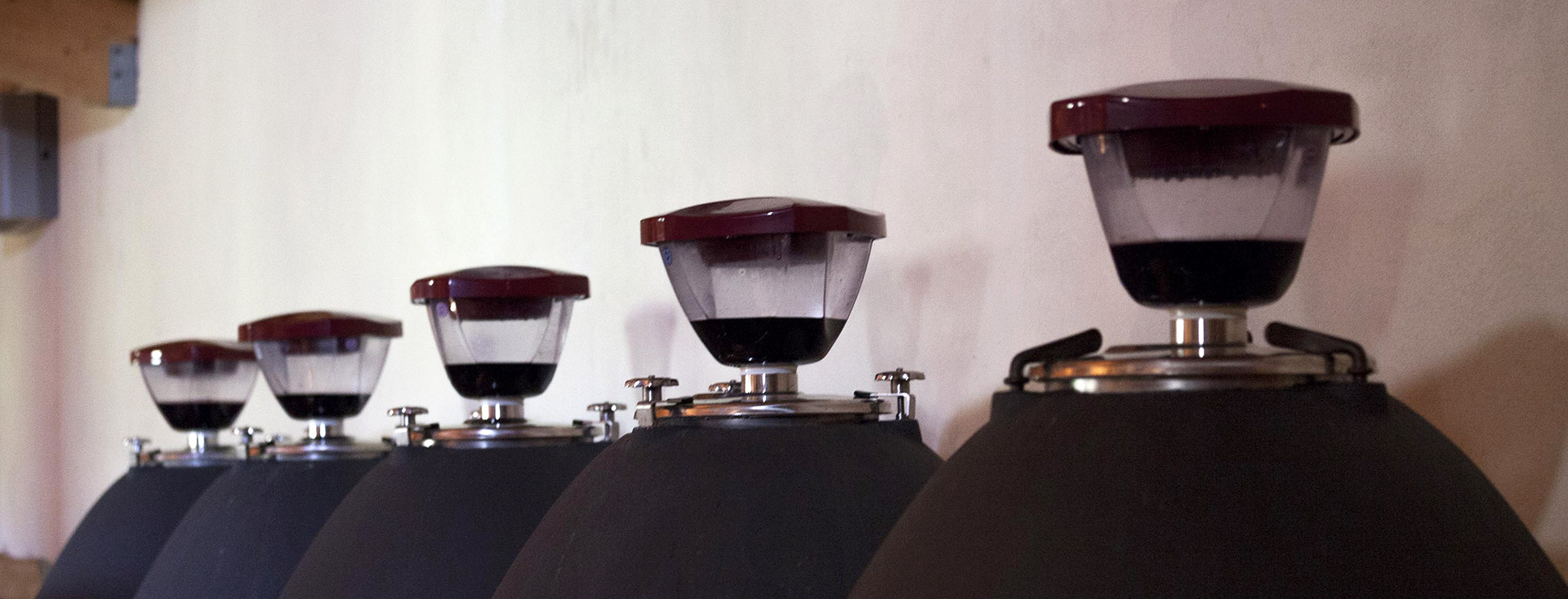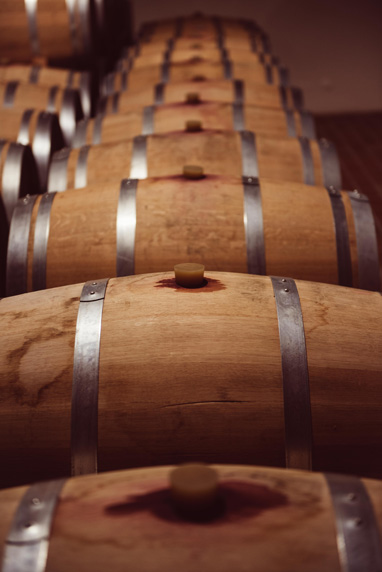“The unfinished is where life sets in” Vladimir Jankélévitch

“The unfinished is where life sets in” Vladimir Jankélévitch
Comments
“After maceration, when the wine is separated from the grape skins, it is still a raw, unstable material. It is cloudy and needs time for the suspended particles to settle on the bottom of the container so that the clear wine can be separated from the lees a month or two later. The involvement of oxygen also softens the tannins and stabilises the colour, as well as changing the wine’s molecular structure. However, this should not be in direct contact with the air, as it would turn the wine into vinegar via a process of lactic spoilage.
How do you prevent this direct contact?
The barrel is a Gallic invention originally created to transport wine. Over time, winemakers realised that it also served as an excellent maturation tool. Wine is placed in the barrel and is then hermetically sealed. It naturally consumes the dissolved oxygen, creating a vacuum. Air then penetrates through the pores in the wood and between the staves and planks that make up the barrel. The wine therefore gains air as and when it needs it, without ever coming into direct contact. This barrel is made of oak. The newer the oak, the greater the impact the aromas it releases will have on the wine’s aromatic profile, structure and sweetness. This addition can offer interesting reinforcement and complexity, provided that the aromatic support of oak is entirely incorporated into the wine and does not ever dominate.
And also provided that the sweetness does not make you think of a soft drink (even surreptitiously).
In the 1990s and 2000s, pressure from various disproportionately influential English-speaking journalists prompted many winemakers to use excessive quantities of new oak in their blends. At this time, Bordeaux began to partially step away from the expression of terroir as its foundation. This was a stubborn trend, and doubtless to a certain extent a conscious complicity with a certain market. The economic impact of these journalist critics was so huge that many bent enthusiastically to their will, losing the soul of the relevant terroir in the process. Personally, I was rather favoured by these critics, even though I have never subscribed to this form of aromatic window-dressing. The fact is that they were also exceptional tasters, some of the greatest in the world, and this combination led more than one winemaker astray. This trend is now fading, and I am delighted to rediscover terroirs that for years have been buried beneath overripening of wonderful grapes, suffering and bulging with juice as they wait for us to harvest them taking their own particular features into account. The young consumers I talk to today do not want standardised flavour stimuli, which is a blessing given the infinite diversity of sensory experiences and their psychodynamic impact. Furthermore, ageing these doped-up wines has clearly showed that they develop into dry, disassociated examples that lack harmony. I have never been interested in this style of wine, and biodynamics has taken me even further away.
It provides wines with structure and fruit without the need for any excess.
In my view, as it currently stands, the most interesting question to answer is: What maturation process can showcase the fruit without the material used having any aromatic effect? In addition to the measured addition of oxygen, it would appear that container shape also plays a role.
If a wine is matured in a vat with racking to aerate it, the weight of the wine on itself exerts pressure that prevents proper oxygen absorption. The wine’s molecules are fixed. In a small container (i.e. under 30 hl) with an oval shape, the wine does not compress itself. The micro-changes in temperature and pressure that are part of the process primarily take place in the narrowest part of the container, creating a gradient in the middle and prompting wine convection. The wine slowly moves, preventing this stagnation and freeing it from its own weight as a result. A rounded shape encourages this movement.
However, this reflection requires taking different approaches for different wines.
At Château Mazeyres, in warm years, Merlot in sandy soil needs help to maintain its backbone and verticality. Maturation in 7hl egg-shaped concrete vats offers excellent results. It enhances the wine’s verticality whilst also showcasing the fruit and refining the tannins. We have acquired fifteen ovoid vats over the past three years and will keep going in years to come. The use of large 15 to 30hl barrels also seems to be a suitable solution for us. They are similarly oval, avoiding wine settling. The input from the wood is lower than for a small barrel as the surface/volume ratio is lower, and because we keep these maturation containers for longer. The newer the barrel or cask, the higher the level of aromatic impact. I tend not to keep small barrels for longer than two years for our top wine, as their porosity can dry out particularly tannic wines. With large barrels, oxygenation remains consistently measured and appropriate to the wine’s needs.
At Château Fonroque, we have been trying out an ovoid vat for around ten years to gain sufficient data. The results are clear. The verticalisation effect is apparent in the wine, but it is not what we are looking for at Fonroque. The limestone terroirs associated with biodynamics produce wines that are already sufficiently upright. We are seeking to maintain this but without reinforcing it, whilst helping to soften the tannins. We now plan to test maturation in an ovoid vat positioned horizontally rather than vertically. The axis change could be what is needed to meet our requirements. However, at Fonroque, the main alternative to a small barrel will be a large barrel. We are currently building a structure dedicated to storing these.
Across the two estates, the small barrel will remain one of the maturation methods used for around 50% of the total volume. Combined with other containers, it supports the work that biodynamics does to reveal expression of fruit.”
Alain Moueix
